Complexity-Effective Joint Detection of Physical Cell Identity and Integer Frequency Offset in 5G New Radio Communication Systems
Abstract
:1. Introduction
2. System Description
2.1. Signal Model
2.2. Synchronization Signal
2.3. Cell Search Procedure
3. Reduced-Complexity ICFO and CIDS Detection Method
3.1. Detection Algorithm
3.2. Performance Analysis
3.3. Complexity Analysis
4. Simulation Results
4.1. Simulation Environment
4.2. Performance Evaluation
5. Conclusions
Author Contributions
Funding
Data Availability Statement
Conflicts of Interest
References
- NR. Physical Layer Procedures for Control (Release 16); Document TS 38.213, V.16.0.0; 3GPP: Sophia Antipolis, France, 2019. [Google Scholar]
- Guo, K.; Liu, R.; Dong, C.; An, K.; Huang, Y.; Zhu, S. Ergodic capacity of NOMA-based overlay cognitive integrated satellite-UAV-terrestrial networks. Chin. J. Electron. 2023, 32, 273–282. [Google Scholar] [CrossRef]
- Guo, K.; Liu, R.; Alazab, M.; Jhaveri, R.H.; Li, X.; Zhu, M. STAR-RIS-empowered cognitive non-terrestrial vehicle network with NOMA. IEEE Trans. Intell. Veh. 2023, 6, 3735–3749. [Google Scholar] [CrossRef]
- NR. Physical Channels and Modulation (Release 16); Document TS 38.211, V.16.1.0; 3GPP: Sophia Antipolis, France, 2020. [Google Scholar]
- Aghazadeh Ayoubi, R.; Spagnolini, U. Performance of dense wireless networks in 5G and beyond using stochastic geometry. Mathematics 2023, 10, 1156. [Google Scholar] [CrossRef]
- Del Puerto-Flores, J.A.; Castillo-Soria, F.R.; Gutiérrez, C.A.; Pena-Campos, F. Efficient index modulation-based MIMO OFDM data transmission and detection for V2V highly dispersive channels. Mathematics 2023, 11, 2773. [Google Scholar] [CrossRef]
- Wu, W.; Liu, D.; Hou, X.; Liu, M. Low-complexity beam training for 5G millimeter-wave massive MIMO systems. IEEE Trans. Veh. Technol. 2020, 69, 361–376. [Google Scholar] [CrossRef]
- Lee, B.M. Enhancing IoT connectivity in massive MIMO networks through systematic scheduling and power control strategies. Mathematics 2023, 11, 3012. [Google Scholar] [CrossRef]
- Wang, P.; Berggren, F. Secondary synchronization signal in 5G new radio. In Proceedings of the 2018 IEEE International Conference on Communications (ICC), Kansas City, MO, USA, 20–24 May 2018. [Google Scholar]
- Vo Dai, T.K.; Kilic, O.; Liu, H. Improved cell search for mmWave cellular networks using deterministic scanning algorithm with directional array antenna. Electronics 2017, 6, 42. [Google Scholar] [CrossRef]
- Andrade, D.; Magueta, R.; Silva, A.; Marques, P. Beamforming based on a SSS angle estimation algorithm for 5G NR networks. Future Internet 2023, 15, 105. [Google Scholar] [CrossRef]
- Chen, F.; Li, X.; Zhang, Y.; Jiang, Y. Design and implementation of initial cell search in 5G NR systems. China Commun. 2020, 17, 38–49. [Google Scholar] [CrossRef]
- Omri, A.; Shaqfeh, M.; Ali, A.; Alnuweiri, H. Synchronization procedure in 5G NR systems. IEEE Access 2019, 7, 41286–41295. [Google Scholar] [CrossRef]
- Inoue, D.; Ota, K.; Sawahashi, M.; Nagata, S. Physical cell ID detection using joint estimation of frequency offset and SSS ssequence for NR initial access. IEICE Trans. Commun. 2021, E104.B, 1120–1128. [Google Scholar] [CrossRef]
- Chang, K.; Cho, W.; Kwak, B.-J.; Ko, Y.-J. Synchronization under hardware impairments in over-6 GHz wireless industrial IoT systems. IEEE Internet Things J. 2023, 10, 6082–6099. [Google Scholar] [CrossRef]
- You, Y.H.; Park, J.H.; Ahn, I.Y. Complexity effective sequential detection of secondary synchronization signal for 5G new radio communication systems. IEEE Syst. J. 2021, 15, 3382–3390. [Google Scholar] [CrossRef]
- Won, S.; Choi, S.W. A tutorial on 3GPP initial cell search: Exploring a potential for intelligence based cell search. IEEE Access 2021, 9, 100223–100263. [Google Scholar] [CrossRef]
- Yin, J.; Lee, M.; Hsiao, W.; Huang, C. A novel network resolved and mobile assisted cell search method for 5G cellular communication systems. IEEE Access 2022, 10, 75331–75342. [Google Scholar] [CrossRef]
- Wang, D.; Mei, Z.; Zhang, H.; Li, H. A novel PSS timing synchronization algorithm for cell search in 5G NR system. IEEE Access 2021, 9, 5870–5880. [Google Scholar] [CrossRef]
- Morelli, M.; Moretti, M. A robust maximum likelihood scheme for PSS detection and integer frequency offset recovery in LTE systems. IEEE Trans. Wireless Commun. 2016, 15, 1353–1363. [Google Scholar] [CrossRef]
- Chu, C.-Y.; Lai, I.-W.; Lan, Y.-Y.; Chiueh, T.-D. Efficient sequential integer CFO and sector identity detection for LTE cell search. IEEE Wireless Commun. Lett. 2014, 3, 389–392. [Google Scholar] [CrossRef]
- Xu, S.; Liu, H.; Zhang, S.; Liu, Q. A joint detection algorithm of integer frequency offset estimation and cell ID based on 5G-NR-V2X. In Proceedings of the 2022 5th International Conference on Advanced Electronic Materials, Computers and Software Engineering (AEMCSE), Wuhan, China, 22–24 April 2022; pp. 618–623. [Google Scholar]
- You, Y.H.; Song, H.K. Efficient sequential detection of carrier frequency offset and primary synchronization signal for 5G NR systems. IEEE Trans. Veh. Tech. 2020, 69, 9212–9216. [Google Scholar] [CrossRef]
- D’Amico, A.; Morelli, M.; Moretti, M. A novel scheme for CP-length detection and initial synchronization for the LTE downlink. IEEE Trans. Wireless Commun. 2019, 18, 4668–4678. [Google Scholar] [CrossRef]
- Abdzadeh-Ziabari, H.; Zhu, W.-P.; Swamy, M.N.S. Joint maximum likelihood timing, frequency offset, and doubly selective channel estimation for OFDM systems. IEEE Trans. Veh. Tech. 2018, 67, 2787–2791. [Google Scholar] [CrossRef]
- Abdelgader, A.; Shu, F.; Wu, L.; Wang, J.; Wang, J. A robust symbol timing synchronization scheme for OFDM systems applied in a vehicular network. IEEE Syst. J. 2019, 13, 1443–1453. [Google Scholar] [CrossRef]
- Tanash, I.M.; Riihonen, T. Global minimax approximations and bounds for the Gaussian Q-function by sums of exponentials. IEEE Trans. Commun. 2020, 68, 6514–6524. [Google Scholar] [CrossRef]
- Peric, Z.; Markovic, A.; Kontrec, N.; Nikolic, J.; Petkovic, M.D.; Jovanovic, A. Two interval upper-bound Q-function approximations with applications. Mathematics 2022, 10, 3590. [Google Scholar] [CrossRef]
- Golub, G.H.; Loan, C.F.V. Matrix Computations, 4th ed.; The Johns Hopkins University Press: Baltimore, MD, USA, 2013. [Google Scholar]
- 5G. Study on Channel Model for Frequency Spectrum above 6 GHz (Release 14); Document TR 138.900, V.14.2.0; 3GPP: Sophia Antipolis, France, 2017. [Google Scholar]
- NR. Base Station (BS) Radio Transmission and Reception (Release 15); Document TS 38.104, V.15.5.0; 3GPP: Sophia Antipolis, France, 2019. [Google Scholar]
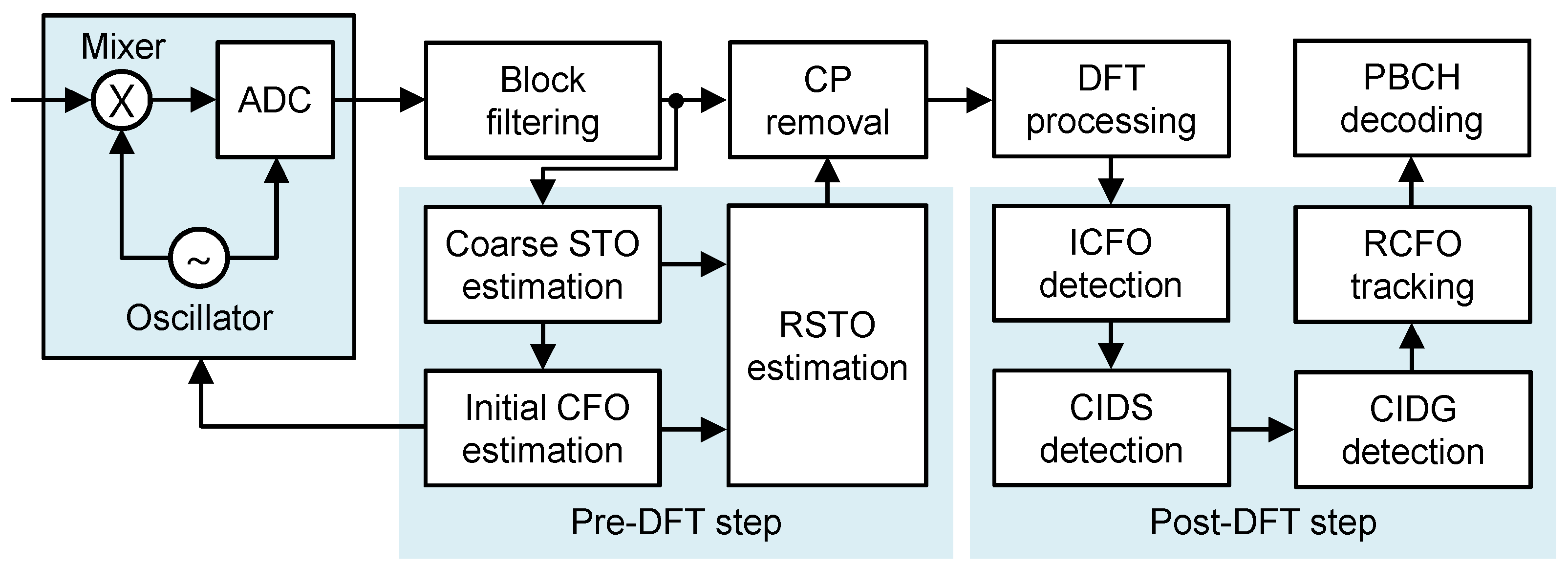
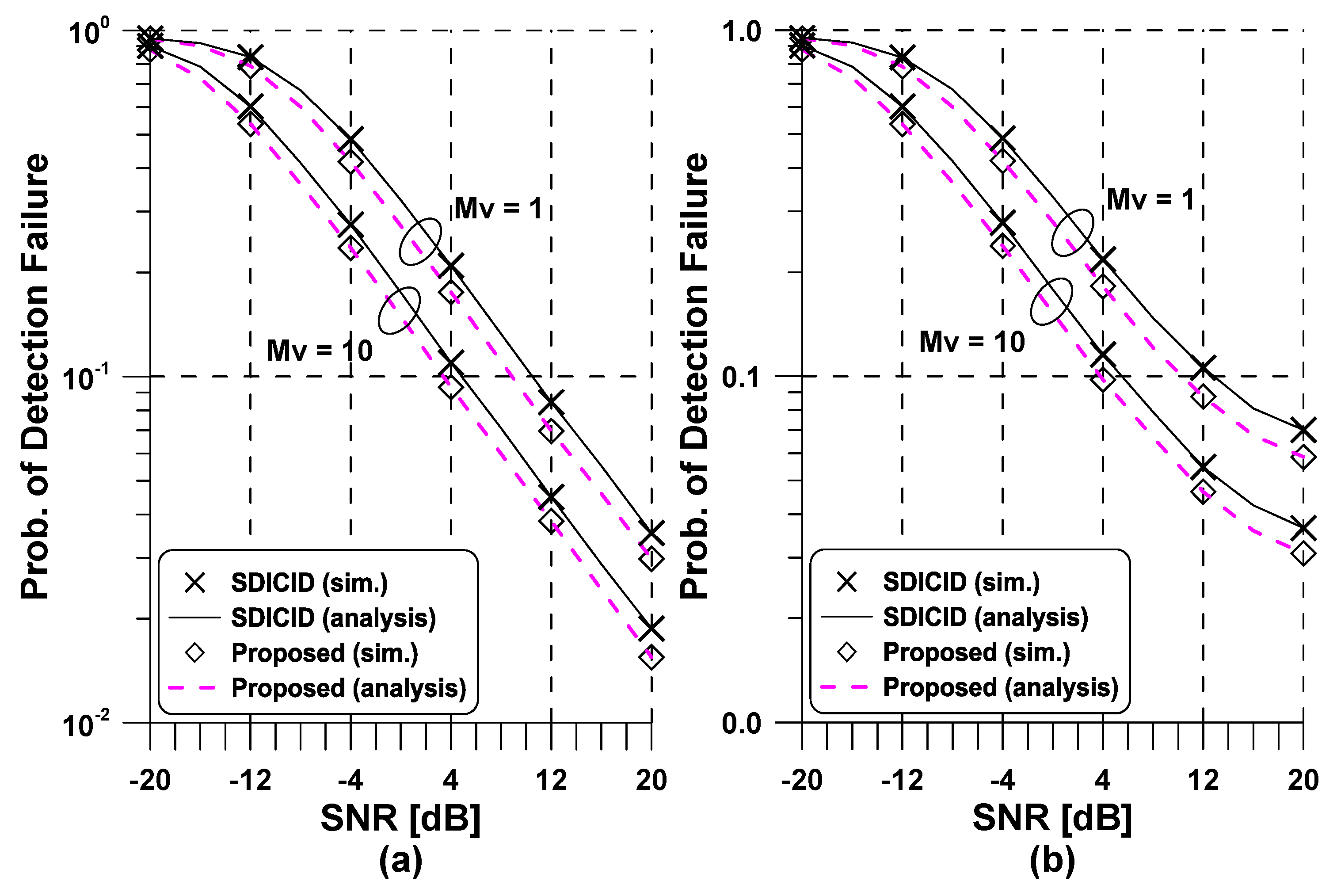
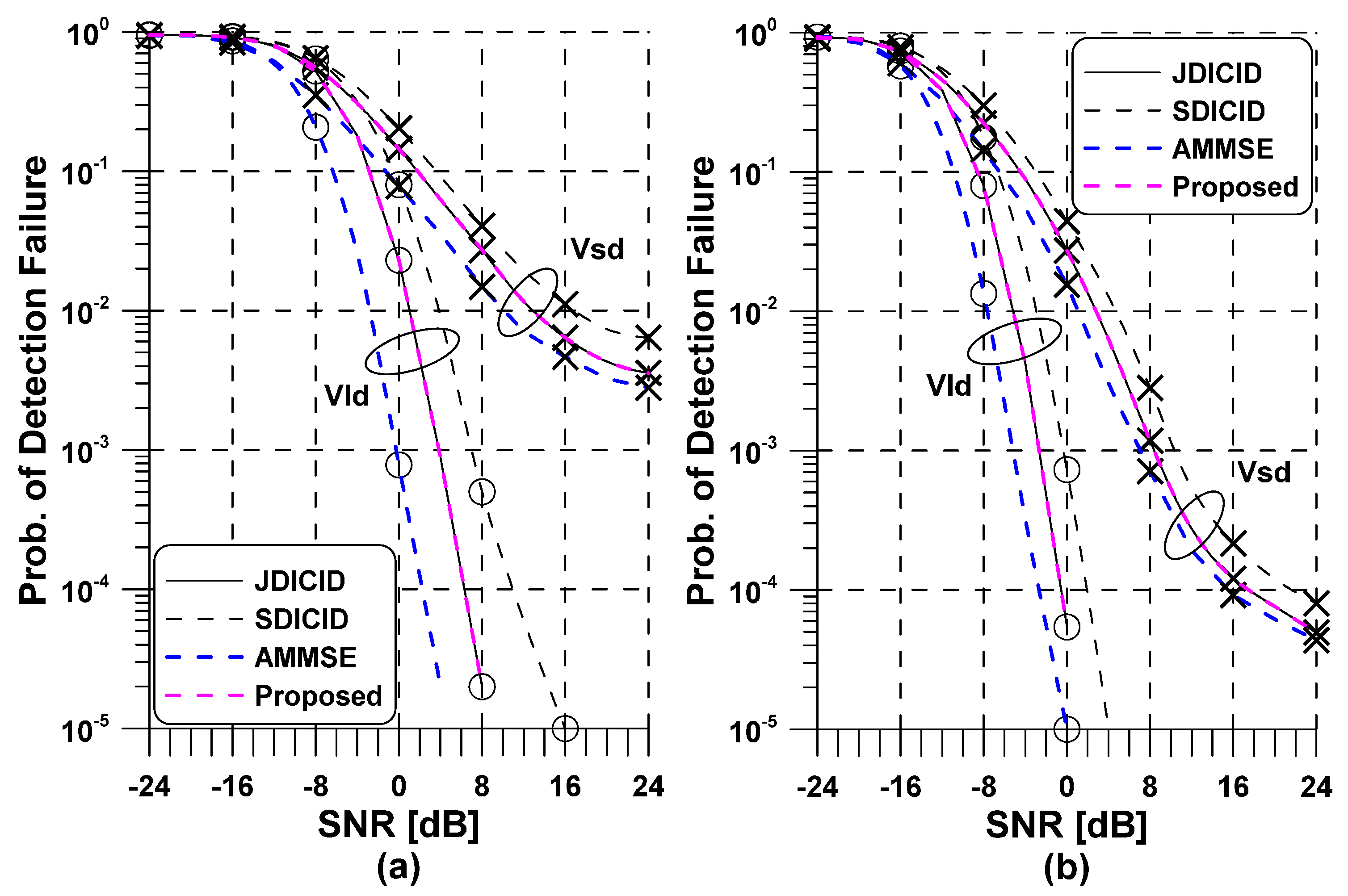

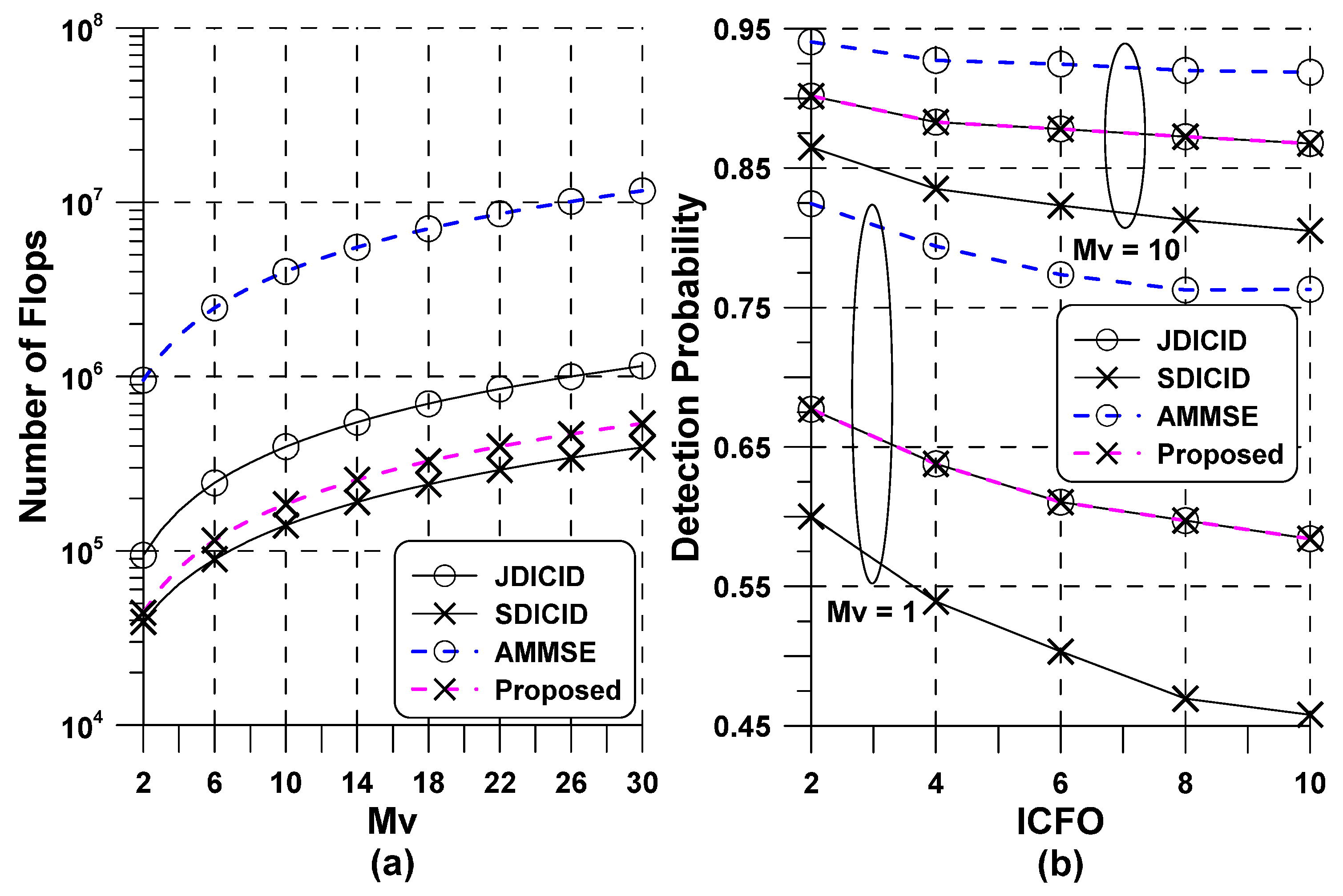
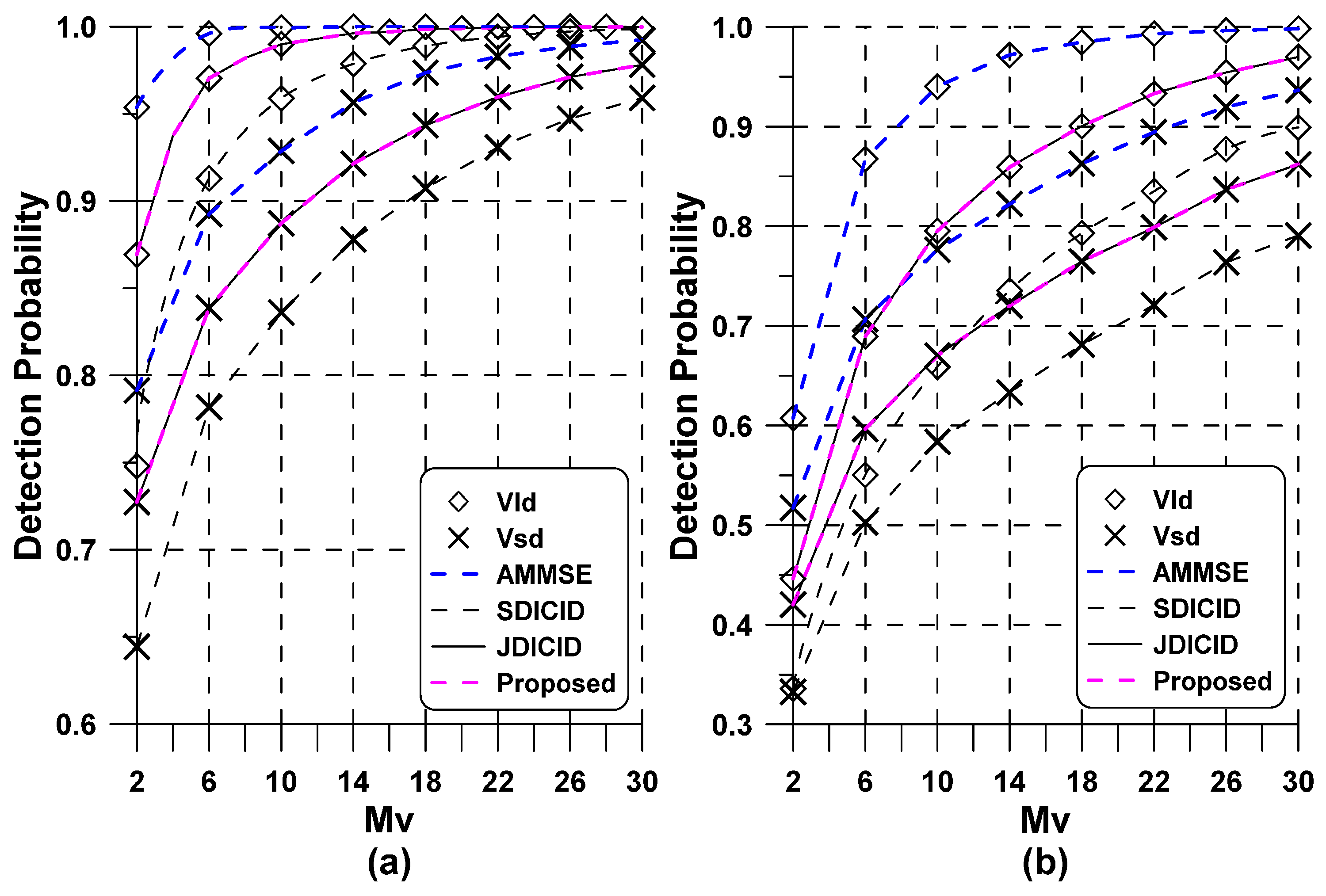
| Algorithm | Number of Flops |
|---|---|
| AMMSE scheme | |
| JDICID scheme | |
| SDICID scheme | |
| Proposed scheme |
| Parameter | Value |
|---|---|
| Carrier frequency | GHz |
| DFT size | |
| CP size | |
| NR-PSS length | |
| Channel bandwidth | MHz |
| Subcarrier spacing | kHz |
| Sampling frequency | MHz |
| Doppler frequency | Hz |
| Channel model | Flat and Rayleigh fading |
Disclaimer/Publisher’s Note: The statements, opinions and data contained in all publications are solely those of the individual author(s) and contributor(s) and not of MDPI and/or the editor(s). MDPI and/or the editor(s) disclaim responsibility for any injury to people or property resulting from any ideas, methods, instructions or products referred to in the content. |
© 2023 by the authors. Licensee MDPI, Basel, Switzerland. This article is an open access article distributed under the terms and conditions of the Creative Commons Attribution (CC BY) license (https://creativecommons.org/licenses/by/4.0/).
Share and Cite
You, Y.-H.; Jung, Y.-A.; Lee, S.-H.; Choi, S.-C.; Hwang, I. Complexity-Effective Joint Detection of Physical Cell Identity and Integer Frequency Offset in 5G New Radio Communication Systems. Mathematics 2023, 11, 4326. https://doi.org/10.3390/math11204326
You Y-H, Jung Y-A, Lee S-H, Choi S-C, Hwang I. Complexity-Effective Joint Detection of Physical Cell Identity and Integer Frequency Offset in 5G New Radio Communication Systems. Mathematics. 2023; 11(20):4326. https://doi.org/10.3390/math11204326
Chicago/Turabian StyleYou, Young-Hwan, Yong-An Jung, Sung-Hun Lee, Sung-Chan Choi, and Intae Hwang. 2023. "Complexity-Effective Joint Detection of Physical Cell Identity and Integer Frequency Offset in 5G New Radio Communication Systems" Mathematics 11, no. 20: 4326. https://doi.org/10.3390/math11204326
APA StyleYou, Y.-H., Jung, Y.-A., Lee, S.-H., Choi, S.-C., & Hwang, I. (2023). Complexity-Effective Joint Detection of Physical Cell Identity and Integer Frequency Offset in 5G New Radio Communication Systems. Mathematics, 11(20), 4326. https://doi.org/10.3390/math11204326






